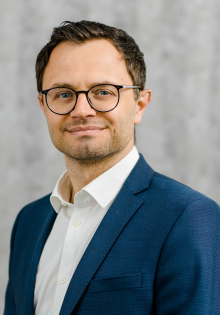Production of innovative semi-finished steel products with wall thickness and strength-variable properties for lightweight construction using internal pressure rolling
Overview
Internal pressure rolling is an innovative manufacturing process that makes it possible to create a wall thickness contour on standard steel tubes by rolling the inside in the longitudinal direction of the tube. The wall thickness contour is only formed on the inside of the tube. The outer diameter remains constant, which makes further processing of the semi-finished product, e.g. by hydroforming, much easier. This new process-guided manufacturing technology achieves wall thickness reductions that were previously impossible to realise (on the inside), while significantly improving the roughness of the machined surface. In addition, the mechanical material properties of tensile strength and hardness of the machined material are increased by up to 70% through work hardening. Due to process analogies to cylinder pressure rolling, improved shape tolerances of the internally pressure rolled tube can be expected.

Die geforderte Wanddickenreduzierung wird prozessgesteuert über das Einstellen des Spaltes zwischen Walzwerkzeug und der am Außendurchmesser des Rohres liegenden Matrize erzeugt. Hierdurch können schon kleine Losgrößen und Prototypen wirtschaftlich hergestellt werden. Zusätzlich erhöht die kompakte Bauweise der Innendrückwalzmaschine, die aufgrund des selbstkompensierenden Verfahrenskraftverlaufes möglich ist, die Kosteneffizienz.
Die bisherigen Untersuchungen haben gezeigt, dass durch das Innendrückwalzen Hohlprofil-Geometrien aus Stahl herstellbar sind, die bisher nur mit hohem Auf-wand hergestellt werden konnten und ein großes Potential für Leichtbauanwendungen haben. Weitere Untersuchungen sollen Aufschluss über den Einfluss der Prozessparameter auf Bauteileigenschaften und die Verfahrensgrenzen geben, um die Prozessführung zu optimieren. Zudem sollen neue Werkzeugkonzepte erarbeitet werden, mit dem Ziel, die Formgebungsmöglichkeiten und Prozessgrenzen zu erweitern.

Funding institutions
The project is sponsored by the Forschungsvereinigung Stahlanwendung e.V. (FOSTA).



